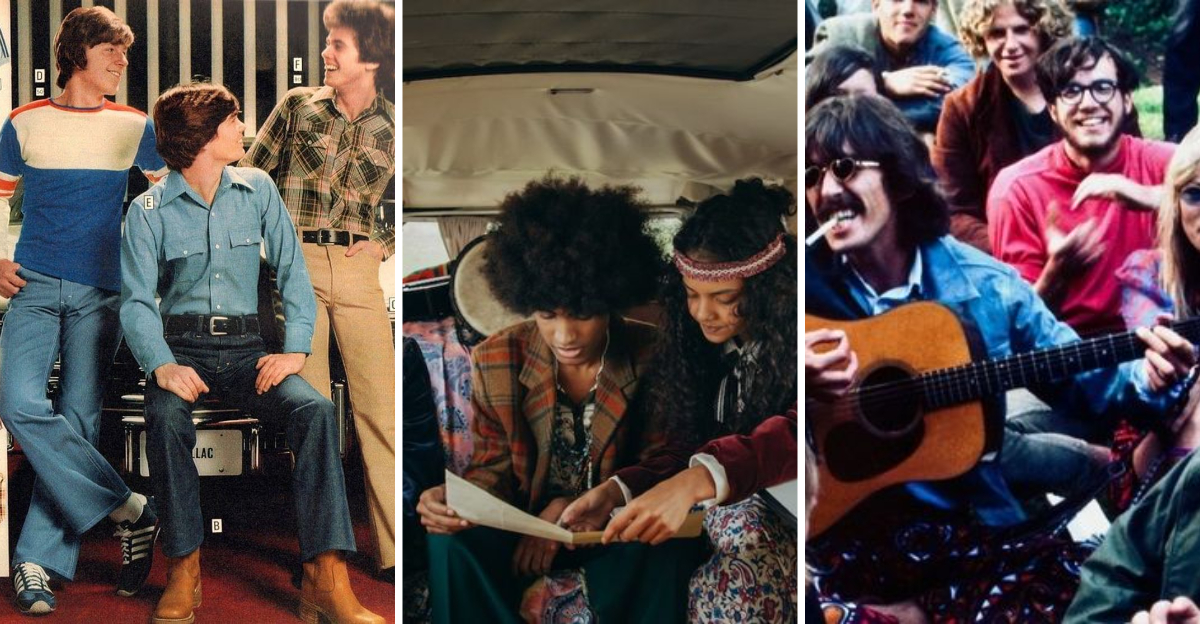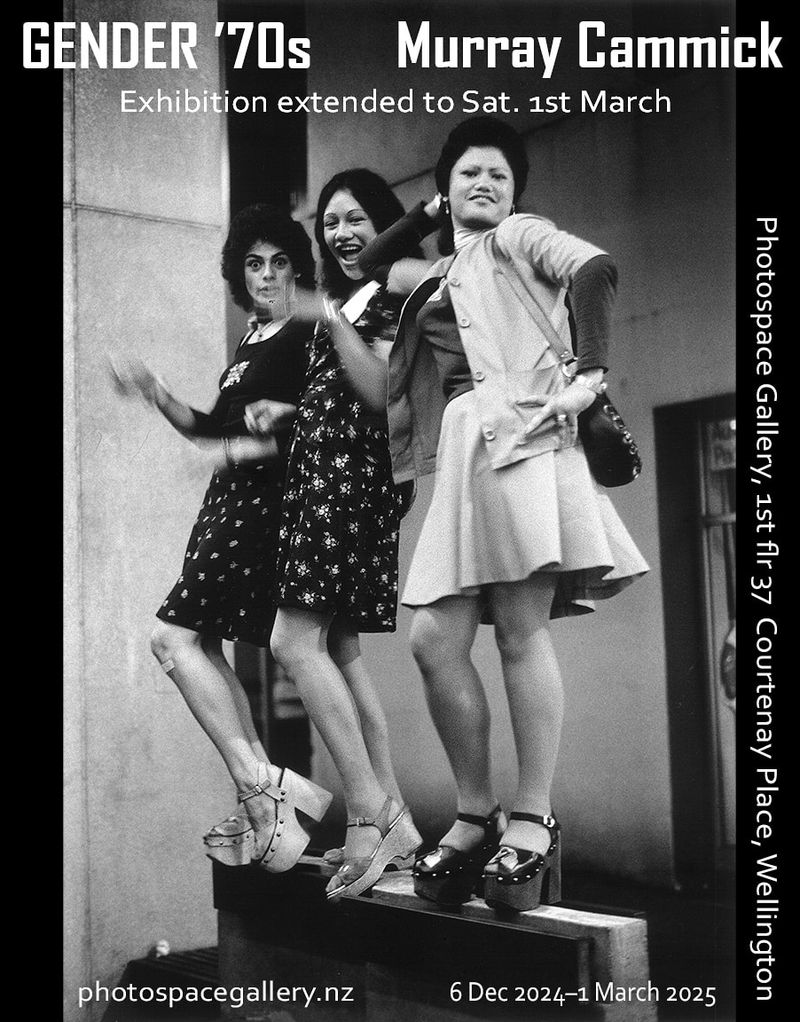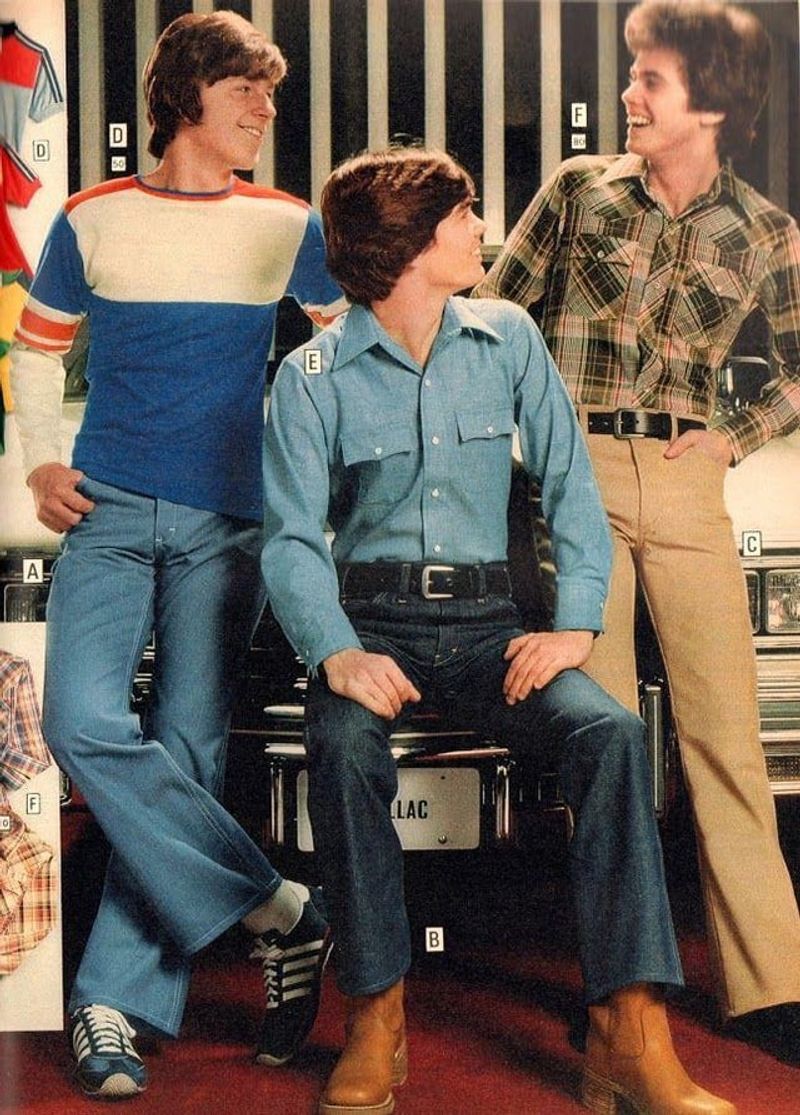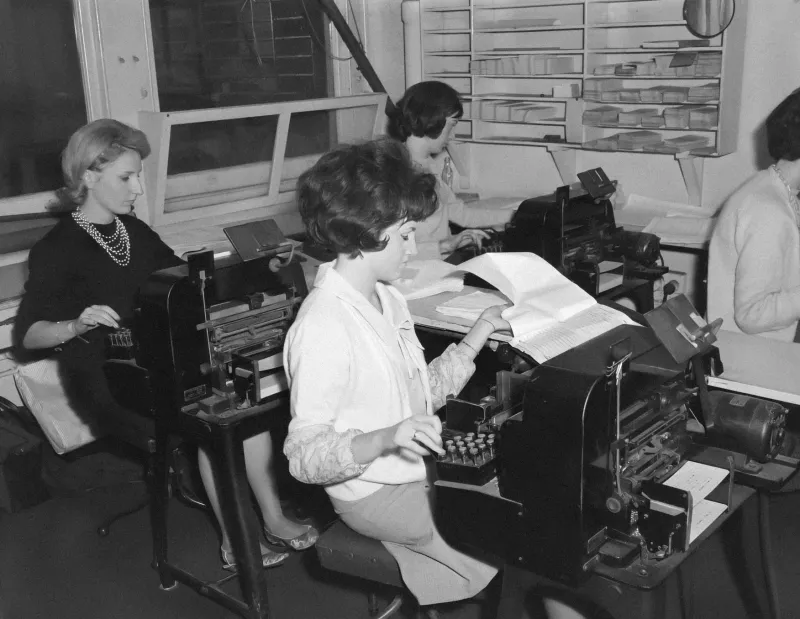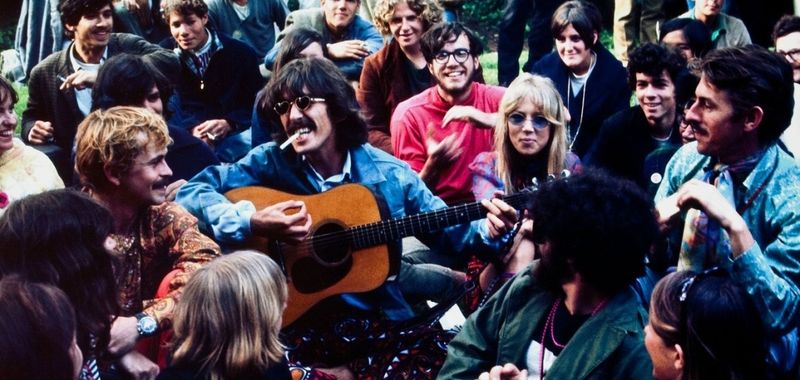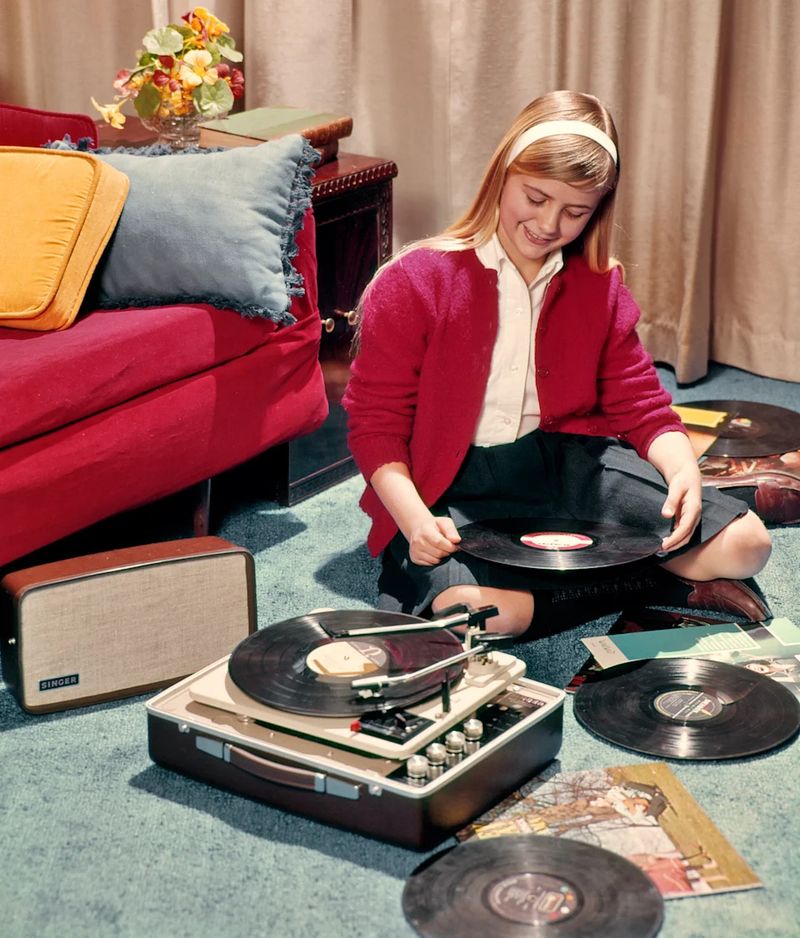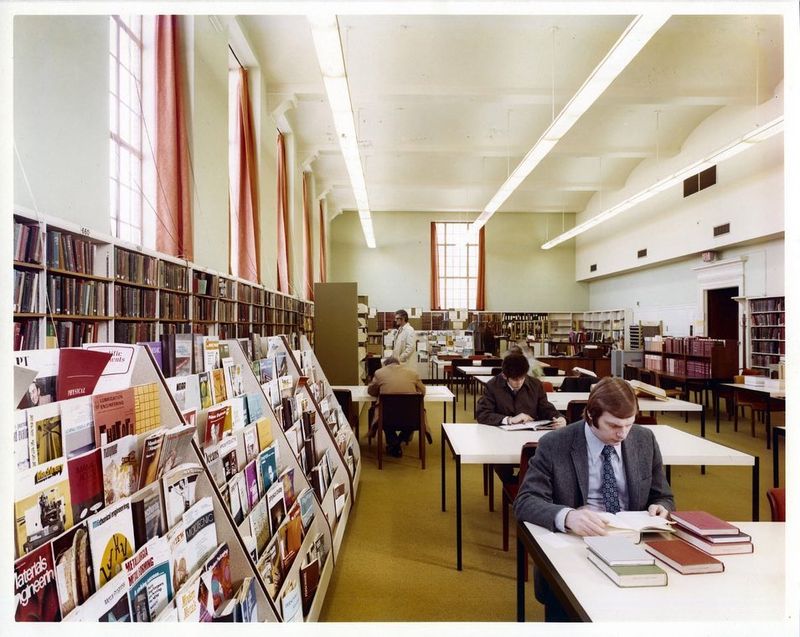In the 1970s, teenagers navigated a landscape shaped by societal expectations and unwritten rules that influenced their daily lives. While Hollywood often portrayed these years through a lens of rebellion and freedom, the reality was more structured and guided by traditional norms. Here are some of the key “teen rules” that defined the era:
Strict Curfews and Community Oversight
When streetlights flickered on, it was a silent command for teenagers to head home. Curfews were not mere suggestions but community-enforced rules. Neighbors, akin to guardians, kept watchful eyes on late-night wanderers, nurturing a tight-knit, vigilant society.
This collective observance created a backdrop where societal expectations thrived, fostering a structured environment. The assurance of community oversight instilled a sense of order and safety, even in rebellious hearts.
Such curfews, while restricting, were integral in weaving the social fabric that defined a generation, balancing youthful freedom with adult responsibility.
Limited Privacy and Family Involvement
Imagine sharing a single phone line with the entire household, where whispered secrets were never truly private. In the ’70s, teenagers found themselves under constant family scrutiny, as every conversation was a potential audience event.
This lack of privacy extended into daily life, with parents and siblings immersed in activities and decisions. Families were deeply interwoven, their involvement a double-edged sword of support and intrusion.
Yet, this closeness fostered resilience and adaptability, teaching teens to navigate their world within a tapestry of familial bonds and shared experiences.
Gender-Specific Expectations
In an era of defined roles, teenage girls were often steered toward domesticity, mastering skills like sewing and cooking. Their voices, gentle and polite, echoed societal expectations of femininity.
Conversely, boys faced pressures to embody toughness, their emotions masked behind stoic facades. This rigid dichotomy split aspirations, guiding life paths along predetermined lines.
Yet, amid these expectations, small acts of defiance sparked change, gradually reshaping norms. The seeds of future gender equality were sown in these subtle rebellions, challenging the status quo one stitch and sports game at a time.
Emphasis on Appearance and Conformity
Bell-bottoms and denim jackets defined the ’70s teen wardrobe, a uniform of sorts that signaled belonging. Deviating from these trends could mean social exile, as conformity reigned supreme.
The pressure to fit in overshadowed personal expression, as appearance became a currency of acceptance. Yet, beneath this surface, individuality simmered, waiting for a chance to break free.
In schools and social circles, the dance between blending in and standing out was delicate, shaping identities in a landscape where clothes spoke louder than words.
Aspiring to be ‘in’ was the norm, but daring to defy it kickstarted personal revolutions.
Limited Career Aspirations for Women
In the ’70s, college doors began to open for more women, yet many were funneled towards “practical” skills. Typing, cleaning, and sewing were the tools of their expected trade, often leading to supportive roles rather than leadership positions.
This steering limited ambitions but also quietly fueled a desire for more, as whispers of change echoed in classrooms and homes.
While some followed traditional paths, others dared to dream, laying groundwork for future generations. The world was slowly evolving, but for many young women, the typewriter was both a tool and a symbol of constrained aspirations.
Strict Dating Protocols
Dating in the ’70s was a ritual of roles. Boys, the initiators, planned dates and paid the bills, while girls, adorned in demure dresses, played hard to get.
These protocols were unwritten yet universally understood, shaping interactions and expectations. Romantic pursuits followed a script, leaving little room for deviation.
But beneath the surface, hearts sought genuine connection, quietly challenging the status quo. Over time, these interactions planted seeds of change, pushing boundaries and laying the groundwork for future equality in relationships.
The dance of dating was a reflection of the era’s broader social dynamics.
Limited Communication Methods
In a world devoid of cell phones and the internet, communication was a waiting game. Teenagers memorized phone numbers, and the family phone was a shared resource, creating a queue for connection.
Conversations were brief, often whispered, an art of brevity in a house full of ears. Face-to-face interactions held premium value, fostering social skills in a tangible world.
While technology limited immediacy, it cultivated patience and creativity in communication. Navigating these constraints shaped resourceful and resilient individuals, adept at human interaction in an analog age.
Emphasis on Conformity Over Individuality
In schools and social circles, fitting in was essential. The 1970s thrived on conformity, where standing out could lead to judgment or ostracism.
Teens often suppressed individuality, wearing similar clothes and echoing popular opinions. This drive to blend in was pervasive, yet it also incubated a yearning for self-expression.
Beneath the surface, a quiet rebellion simmered, as creative minds sought outlets to defy norms. The tension between conformity and individuality created a dynamic backdrop, setting the stage for future cultural shifts and personal awakenings.
Parental Influence and Expectations
Parental influence was a defining force in the ’70s, shaping the lives and decisions of teenagers. Families were closely knit, with parents often taking an active role in guiding their children’s paths.
This involvement included setting expectations for behavior, academics, and future plans. While some teens felt supported, others experienced pressure to conform to parental ideals.
Despite these dynamics, many teenagers found ways to assert their independence and carve out their own identities. The push and pull of parental influence created a complex interplay of tradition and modernity, shaping a generation’s upbringing.
Limited Entertainment Options
Before streaming services and video games, entertainment in the ’70s revolved around music, television, and outdoor activities. Teenagers would gather around record players, sharing tunes and forming connections through shared musical tastes.
Television, with limited channels, was a communal experience, often bringing families together for favorite shows.
Outdoor activities, like sports or simply hanging out at the park, were popular pastimes, fostering friendships and community bonds. This era of “analog” entertainment encouraged creativity and social interaction, creating lasting memories and a sense of belonging.
Peer Pressure and Social Dynamics
Peer pressure was a powerful force among ’70s teenagers, shaping choices and behaviors. In social settings, the desire to fit in often led to conforming to group norms, whether in fashion, music, or opinions.
The fear of being ostracized was palpable, driving many to suppress individuality for the sake of acceptance. Yet within these dynamics, friendships were forged, and social skills honed.
Navigating peer pressure required a delicate balance of staying true to oneself while blending into the collective. This interplay of social dynamics created a rich tapestry of teenage experiences.
Limited Access to Information
In the pre-digital age, access to information was a treasure hunt. Libraries were sanctuaries of knowledge, where teenagers spent hours sifting through books for school projects or personal curiosity.
Without the internet, learning required patience and perseverance, as well as a reliance on printed materials and word-of-mouth.
This limitation fostered a deep appreciation for knowledge and critical thinking skills. The search for information was an adventure, teaching resourcefulness and tenacity.
Though constrained by today’s standards, these experiences enriched the intellectual growth of ’70s teens.
Fashion as Cultural Expression
Fashion in the ’70s was more than just clothing; it was a cultural statement. Bell-bottoms, tie-dye shirts, and platform shoes became symbols of a generation seeking identity and expression.
Teens used fashion to communicate their beliefs, affiliations, and moods, creating a vibrant tapestry of styles that defined the era.
This sartorial rebellion against the norm allowed individuality to flourish, sparking movements and challenging traditional fashion standards. In every stitch and pattern, fashion in the ’70s was a canvas for creativity and a catalyst for change.
